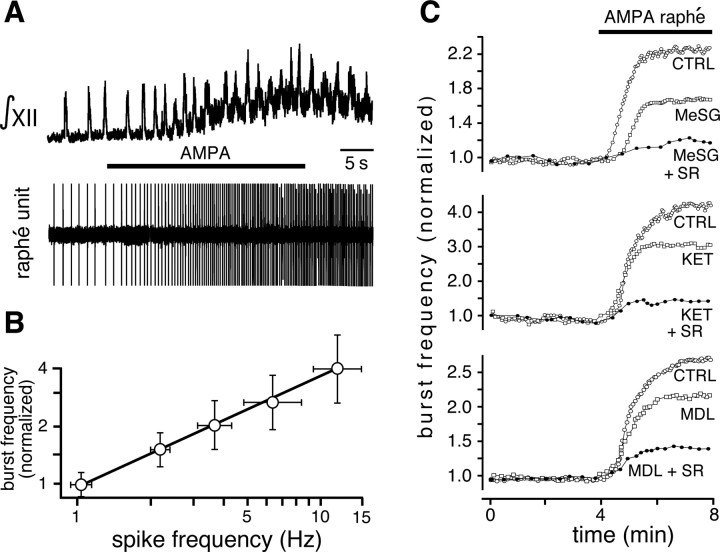Figure 10.
Increased firing of raphé neurons in slices stimulates inspiratory output via activation of 5-HT2 and NK-1 receptors. A, XII motor output (top, ∫XII) recorded simultaneously with extracellular potential of a raphé obscurus neuron (bottom trace). AMPA (5 μm) microinfused into the n. raphé obscurus progressively increased firing rate of the raphé neuron (6.5-fold) and inspiratory frequency (1.9-fold). There was also an increase in tonic activity in hypoglossal motoneurons, as seen by the shift in baseline of the integrated XII population activity. B, Relationship between inspiratory burst frequency (normalized to baseline) and average firing rate of raphé neurons (n = 12 slices). Data points are mean values ± SEM. C, Top, The excitatory effect of raphé stimulation on burst frequency [control (CTRL)] was partially blocked by bath-applied MeSG (5 μm), and nearly eliminated by coapplication of SR 140333 (MeSG + SR; 7.5 μm). Middle, The excitatory effect was also partially blocked by bath-applied KET (7.5 μm), and further attenuated by coapplying SR 140333 (KET + SR). Bottom, MDL 11,939 (10 μm) also partially blocked the excitation, which was also further attenuated by coapplying 7.5 μm SR (MDL + SR).

